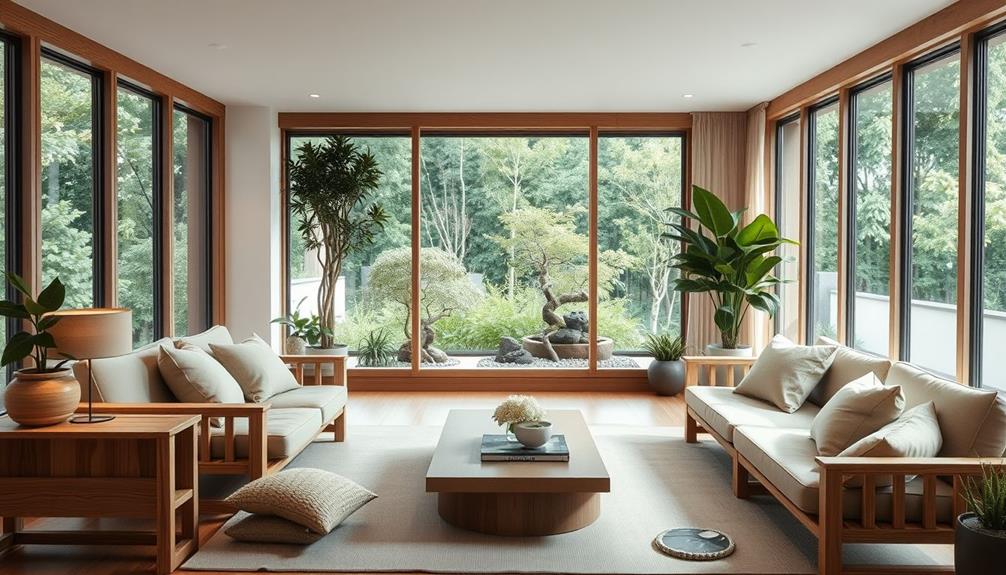The future of work is all about flexibility and innovation, revolutionizing how you interact with your workspace. You’ll come across spec suites that blend private offices with communal areas, catering to a variety of work preferences. Resimercial designs create a work environment that feels like home, promoting creativity and connection. Health and wellness are prioritized, with natural light and outdoor spaces improving your overall well-being. Technology is crucial for fostering seamless collaboration and adaptability. Additionally, the increasing emphasis on sustainable practices ensures that an eco-friendly workplace boosts employee morale and attracts top talent. Explore how these trends are shaping the workplace of today and tomorrow.
Key Takeaways
- The future of work emphasizes flexible office designs, such as spec suites, to accommodate diverse work styles and enhance productivity.
- Resimercial design trends merge home comforts with office functionality, creating inviting spaces that foster collaboration and creativity.
- Health and wellness integration prioritizes natural light and outdoor elements, improving employee well-being and enhancing focus in the workplace.
- Technology innovations, including touchless systems and smart furniture, streamline collaboration and support remote work, ensuring seamless communication.
Spec Suites and Flexible Workspaces

Spec suites are becoming a popular choice for businesses seeking adaptable workspaces that blend private offices with collaborative areas, catering to the growing demand for flexibility.
You'll find these spaces are designed to accommodate various work styles, allowing teams to thrive in both focused and communal settings.
As remote work continues to rise, the need for customizable office solutions has never been greater.
However, managing spec suites comes with challenges; you'll need to balance inventory availability with tenant demand to prevent idle spaces.
Flexible furniture options can enhance the workspace's adaptability, ensuring your team stays productive and satisfied.
Embracing this trend means you're investing in a future-ready environment that can evolve with your business needs.
Resimercial Design Trends
As workplaces embrace flexibility, resimercial design trends are merging home comfort with office functionality, creating inviting environments that cater to diverse work styles.
You'll notice common areas that feel more like comfortable living rooms, equipped with cozy seating and collaborative spaces. This design approach encourages social interaction while promoting productivity.
You can expect multifunctional spaces, like kitchen tables fitted with technology, allowing seamless changes between informal and formal work settings.
Natural materials and warm colors enhance the overall aesthetic, making you feel at ease. By incorporating elements from home, these spaces foster creativity and collaboration, making it easier for you to switch gears throughout the day and adapt to different tasks as needed.
Health and Wellness Integration

Health and wellness integration in the workplace is now a top priority, with designs that emphasize natural light, outdoor spaces, and biophilic elements to boost your overall well-being and productivity.
You'll find that these features not only create a pleasant environment but also enhance your focus and creativity.
Incorporating wellness certifications like WELL and Fitwel guarantees that your workspace meets health standards, promoting physical and mental well-being.
Flexible spaces allow for movement and adaptability, encouraging collaboration and reducing stress.
Access to nature, whether through living walls or outdoor lounges, fosters a sense of calm.
Evolving Tenant Expectations
Evolving tenant expectations demand a greater focus on flexibility and health-related amenities in the workplace.
Today, you expect spaces that adapt to your needs, whether through spec suites or flexible office layouts. The desire for outdoor spaces and natural light has surged, highlighting the importance of well-designed environments that promote wellness and productivity.
You're also prioritizing cleanliness and health protocols, seeking buildings that implement rigorous cleaning and safety measures.
Additionally, amenities that foster community and collaboration are essential, as they enhance your overall experience.
Engaging with your landlord or property manager about these needs can guarantee that your workspace not only meets your expectations but also supports your well-being in this new era of work.
Technology's Role in Innovation

Technology's integration in the workplace is transforming how you collaborate and interact, making environments more efficient and responsive to your needs.
With advances like touchless technology and smart lighting, you experience enhanced convenience and safety. These innovations support remote work and virtual collaboration, allowing seamless communication with your team, no matter where you are.
Smart furniture solutions enable you to adapt your workspace quickly, fostering creativity and productivity. Additionally, sustainability is becoming a priority, with biophilic design principles improving your overall well-being.
As technology continues to evolve, it will play an essential role in shaping innovative workspaces that meet your changing demands and expectations, ultimately enhancing your work experience and satisfaction.
Furniture Trends and Adaptability
Adapting your workspace with flexible furniture solutions can greatly enhance your productivity and collaboration in today's dynamic work environment.
You'll find that modular desks and adjustable seating allow you to easily reconfigure your space to suit different tasks and team needs.
The rise of the furniture rental market means you can access high-quality pieces without long-term commitments, making it easier to experiment with layouts.
Subscription-based models offer financial flexibility, letting you refresh your workspace regularly.
Prioritizing adaptable furniture not only fosters creativity but also attracts talent by creating a more engaging atmosphere.
Embracing these trends helps you stay agile, ensuring your workspace evolves alongside your team's requirements.
Sustainability in the Workplace

Sustainability is becoming an essential focus in workplace design, as companies recognize the benefits of eco-friendly practices for both the environment and their bottom line.
You can incorporate sustainable materials, energy-efficient systems, and waste-reduction strategies in your workspace. By investing in green technologies, like smart lighting and HVAC systems, you'll not only lower operational costs but also create a healthier environment for employees.
Encourage practices such as recycling and using biodegradable products to foster a culture of sustainability. Additionally, consider designing spaces that maximize natural light and incorporate greenery, enhancing employee well-being.
Ultimately, embracing sustainability in your workplace can boost morale, attract talent, and improve your company's reputation while helping the planet.
How Can Flexibility and Innovation in the Future of Work Impact Event Design Trends?
When considering the future of work, it’s essential to understand how flexibility and innovation will shape the latest event design trends. With remote and hybrid work models becoming more common, event design will need to accommodate flexible scheduling and virtual attendance while still providing engaging and immersive experiences.
How Will the Future of Work Incorporate Flexibility and Innovation for Small Home Office Setups?
The future of work will transform your home office by incorporating flexibility and innovation. Small home office setups will adapt to accommodate remote work and creative solutions. With the rise of technology and virtual collaboration tools, working from home will continue to evolve, offering greater flexibility and opportunities for innovation.
Conclusion
As you step into the future of work, think of your workspace as a canvas—one that's constantly evolving to reflect your needs and aspirations.
Embracing flexibility and innovation isn't just a trend; it's a bold statement about prioritizing well-being and collaboration.
By integrating health, technology, and sustainability, you're not just adapting; you're thriving in a dynamic environment.
So, gear up to reshape your work experience and open up the full potential of what your workplace can be.









